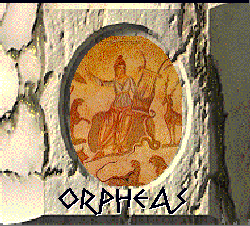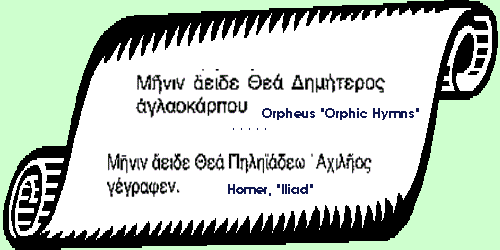



Orpheas was the son of Oeagrus who was king of Thrace. "Orpheas succeeded his father to the throne, having been taught Astronomy, Theology, the Mysteries, the Art of Music and everything that could contribute to his great education by his own father". (Ogygia Vol. 4)
For the first time Orpheas reveals all that information on the structure of the Universe to the Argonauts ("Argonautica" by Orpheas lines 12-17). Until that time this kind of knowledge was being circulated strictly among the initiated. He decided to do so probably because all the Argonauts came from noble families and he trusted them. It was common belief among the distinguished men ("Aristoi") that if these pieces of knowledge were spread among other people they might show inability to understand them and they might misinterpret them with any unanticipated consequences. This becomes also clear from the argument between Aristotle and The Great Alexander many years later, when Aristotle decided to make his knowledge and teachings publicly known and he found himself confronted with The Great Alexander's objection, who believed that this kind of knowledge should be only in the possession of the most excellent men. (Plutarchus)
Orpheas' teachings and theories are preserved in "Argonautica", "The Orphic Hymns", and "Fragments". The Orphic Hymns are a valuable work and a challenge for scientists because we are given information on the astronomical knowledge of Hellenes during the 2nd Millennium B.C. as well as before it. Some writers also saved that even Homer copied some verses from the Orphic Hymns like the beginning of his "Iliad" (Clemes Alexandreus, Proclus, Athenagoras, Iustinus).

"Lithica" (=of Stones), a different kind of work, reveal Orpheas' knowledge on the therapeutical properties of several stones. Here, he teaches that the Earth not only gives birth to venomous snakes but She also produces semi-precious stones, certain herbs and roots which can cure humans' illnesses. He probably got himself involved in the research of the curable properties of particular stones and plants prompted by his deep sorrow after his beloved Euridice's death caused by a snake's bite.
The collection and the recording of theOrphic texts started in the 6th century B.C. when Ipparchus -Peisistratus' son- ruled Athens. He set up a committee who undertook the hard task of collecting all the fragments of Orpheas' teachings as well as the theories of his initiated students -Musaeus was the most famous- which were communicated from generation to generation through centuries.
 Go back to Mythology first page. Go back to Cosmogony-Theogony first page.
Go back to Mythology first page. Go back to Cosmogony-Theogony first page.